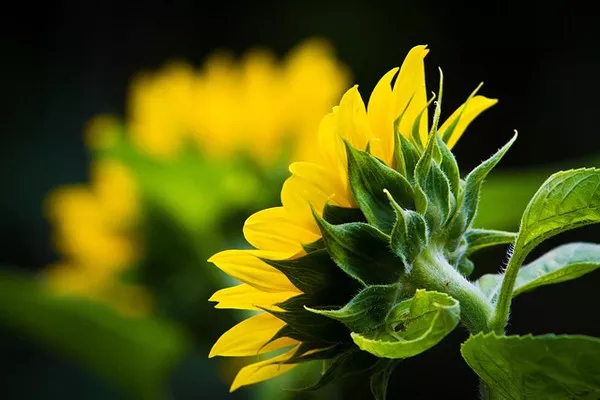Sunflowers (Helianthus spp.) are iconic flowers known for their striking appearance and symbolic representation of happiness and warmth. While many sunflower varieties are annuals, requiring replanting each year, there are several perennial sunflowers that delight gardeners with their enduring beauty year after year. This article explores the world of perennial sunflowers, their characteristics, benefits, and how to cultivate them in your garden.
What are Perennial Sunflowers?
Perennial sunflowers are sunflower varieties that live for multiple growing seasons, producing blooms year after year without the need for replanting. Unlike annual sunflowers, which complete their lifecycle within a single season, perennial sunflowers persistently regrow from their root systems, also known as rhizomes or tubers.
Common Varieties of Perennial Sunflowers
a. Helianthus ‘Lemon Queen’:
As one of the most popular perennial sunflowers, ‘Lemon Queen’ dazzles with its bright yellow flowers and grows to a height of 4 to 6 feet. This variety blooms in late summer and is known for attracting pollinators, making it a perfect addition to wildlife-friendly gardens.
b. Helianthus salicifolius ‘First Light’:
‘First Light’ is a compact perennial sunflower that reaches 3 to 4 feet tall. Its stunning golden-yellow flowers bloom in mid-summer, adding a cheerful touch to any landscape. Its more modest size makes it suitable for smaller garden spaces or container gardening.
c. Helianthus tuberosus (Jerusalem Artichoke):
Known for its edible tubers, Jerusalem Artichoke is also an excellent perennial sunflower. It can grow up to 10 feet tall, producing bright yellow flowers in the late summer to early fall. Gardeners must take care to contain its spread, as it can become invasive.
d. Helianthus ‘Autumn Gold’:
‘Autumn Gold’ is a late-blooming perennial sunflower that stands at about 5 to 7 feet tall. Its golden-yellow flowers appear in the autumn, providing a captivating display during the waning days of the gardening season.
Advantages of Planting Perennial Sunflowers
a. Low Maintenance: Once established, perennial sunflowers require minimal care, as they return each year on their own. This makes them an excellent choice for gardeners looking to reduce their workload while still enjoying stunning blooms.
b. Long-lasting Blooms: Unlike annual sunflowers that bloom for a limited period, perennial varieties offer extended flowering periods, adding vibrancy to the garden for several weeks or even months.
c. Habitat for Wildlife: Perennial sunflowers attract a wide array of pollinators, including butterflies, bees, and birds, which contribute to a healthy and biodiverse garden ecosystem.
d. Naturalize Easily: Perennial sunflowers have the potential to naturalize, forming self-sustaining colonies in suitable environments. This process can create beautiful, wildflower-like patches in gardens and open spaces.
Cultivating Perennial Sunflowers
a. Site Selection: Choose a sunny location with well-draining soil for planting perennial sunflowers. They thrive in full sunlight, requiring at least 6 to 8 hours of direct sunlight daily.
b. Soil Preparation: Before planting, amend the soil with organic matter to improve its fertility and drainage. Work in compost or well-rotted manure to create a nutrient-rich and loose soil environment.
c. Planting: Perennial sunflowers can be planted from rhizomes, tubers, or seeds. If using rhizomes or tubers, ensure they are planted at a depth of around 2 to 4 inches in the soil. If starting from seeds, sow them directly into the garden soil after the last frost date.
d. Watering: Provide adequate water during the establishment period, especially in the first growing season. Once established, perennial sunflowers can tolerate some drought, but regular watering during dry spells encourages healthier growth and flowering.
e. Mulching: Apply a layer of organic mulch around the plants to help retain soil moisture, suppress weed growth, and maintain a cooler root zone.
f. Support: Some taller varieties might require staking or support to prevent them from toppling over during heavy rains or winds.
g. Pruning: Deadhead spent flowers to encourage prolonged blooming and prevent the plant from directing energy toward seed production.
Conclusion
Perennial sunflowers are a fantastic addition to any garden, providing year after year of vibrant and cheerful blooms with minimal effort. Their low maintenance requirements, long-lasting flowers, and wildlife-attracting capabilities make them a favorite among gardeners. By incorporating perennial sunflowers into your landscape, you not only add beauty to your surroundings but also contribute to a healthier ecosystem. So, whether you have a small urban garden or a sprawling country yard, consider planting perennial sunflowers for an enduring display of nature’s splendor.


